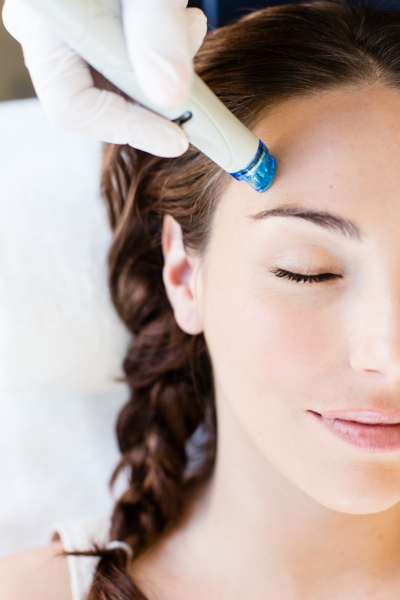CONTACT US
We would love to speak with you.
Feel free to reach out using the below details.
GET IN TOUCH
HOURS
- Mon-Thu 9:00AM - 5:00PM
- Friday 9:00AM - 12:00PM
Actinic keratosis is a rough, scaly patch or bumps on the skin. It’s also known as solar keratosis. Actinic keratoses are very common, and many people have them. They are caused by ultraviolet (UV) damage to the skin. Some actinic keratoses can turn into squamous cell skin cancer. Because of this, the lesions are often called precancer. They are not life-threatening. But if they are found and treated early, they do not have the chance to develop into skin cancer.

UV rays from the sun and from tanning beds cause almost all actinic keratoses. Damage to the skin from UV rays builds up over time. This means that even short-term exposure to sun on a regular basis can build up over a lifetime and increase the risk of actinic keratoses. Some people are more at risk than others, including:
People with pale skin, blonde or red hair, and blue, green, or gray eyes
People with darker skin, hair, and eyes who have been exposed to UV rays without protection
Older adults
People with suppressed immune systems (due to chemotherapy, AIDS, organ transplant, or other causes)
People with rare conditions that make the skin very sensitive to UV rays, such as albinism or xeroderma pigmentosum (XP)

A patient who has been diagnosed with actinic keratoses should be provided with the following information:
A dermatologist will provide their patient with all the necessary information so that they can make informed decisions about their care and take an active role in managing their skin health.
The five most common risk factors for developing actinic keratoses (AKs) are:
It is important to note that anyone can develop AKs, regardless of their skin type or color. If you have any of these risk factors, it is important to take steps to protect your skin from the sun and to have regular skin examinations to detect any AKs or other skin lesions early.
Actinic keratoses (AKs) are not contagious and do not spread from person to person. However, if left untreated, they can gradually grow in size and number on the affected area of skin. In some cases, they can progress to a type of skin cancer called squamous cell carcinoma (SCC).
While AKs themselves do not spread to other parts of the body, it is possible for skin cancer to develop in other areas of the skin. This is why it is important to have regular skin examinations and to promptly report any new or changing skin lesions to your healthcare provider.
It is also important to note that if you have been diagnosed with AKs, you may have an increased risk of developing other types of skin cancer in the future. This is why it is important to take steps to protect your skin from the sun, such as wearing protective clothing and using a broad-spectrum sunscreen with an SPF of at least 30, and to have regular skin examinations.
Yes, actinic keratoses (AKs) can grow in size over time if left untreated. They usually start as small, scaly patches on the skin that may be barely noticeable, but can gradually increase in size and thickness. In some cases, AKs can become raised, rough, or even develop a warty appearance.
It is important to have AKs examined by a dermatologist and treated promptly, as they can progress to a type of skin cancer called squamous cell carcinoma (SCC), which does have the potential to spread to other parts of the body if not treated early.
In addition to growing in size, AKs can also increase in number over time, especially in people who continue to have significant sun exposure without protection. This is why it is important to take steps to protect your skin from the sun, such as wearing protective clothing and using a broad-spectrum sunscreen with an SPF of at least 30, and to have regular skin examinations.
The best way to prevent actinic keratoses (AKs) is to protect your skin from the sun’s harmful ultraviolet (UV) rays. Here are some tips for preventing AKs:
By taking these steps, you can help protect your skin from the sun’s harmful rays and reduce your risk of developing AKs and other types of skin damage.
Actinic keratoses (AKs) can be treated using various methods, depending on the location and severity of the lesions, as well as the patient’s overall health and preferences. Here are some common treatment options:
Your dermatologist can help determine the best treatment option for your individual needs and preferences. It is important to follow all treatment instructions carefully and to protect your skin from the sun’s harmful ultraviolet (UV) rays to prevent the development of new AKs and reduce the risk of skin cancer.
We would love to speak with you.
Feel free to reach out using the below details.
2140 NE 26th Street Fort Lauderdale, FL 33305
Copyright © 2023 Cherise Mizrahi-Levi DO PA. All rights reserved.